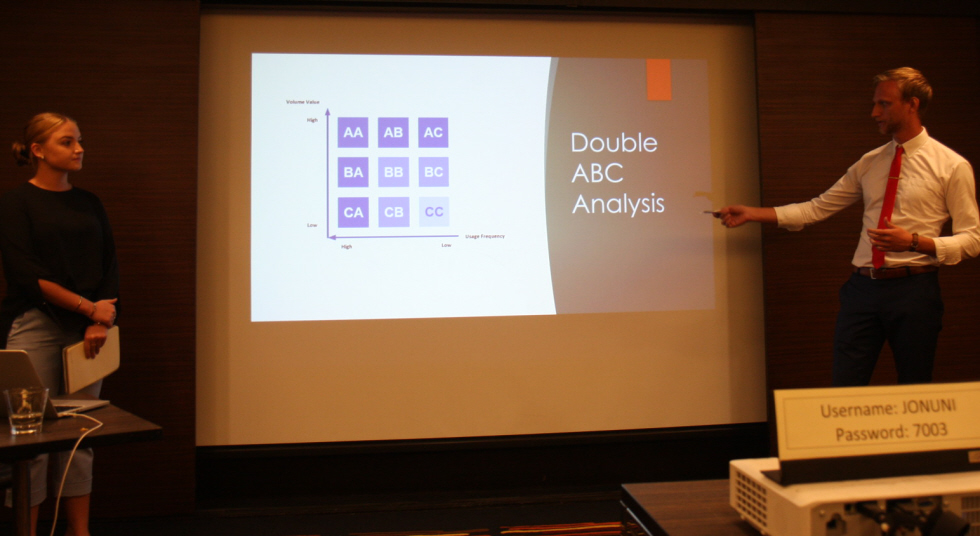Promoting education in connection to the ‘Swedish Education & Career Days’ held in Bangkok, Jönköping University (JU) is not only one of Sweden’s most international universities but also one the most forward-looking globally.
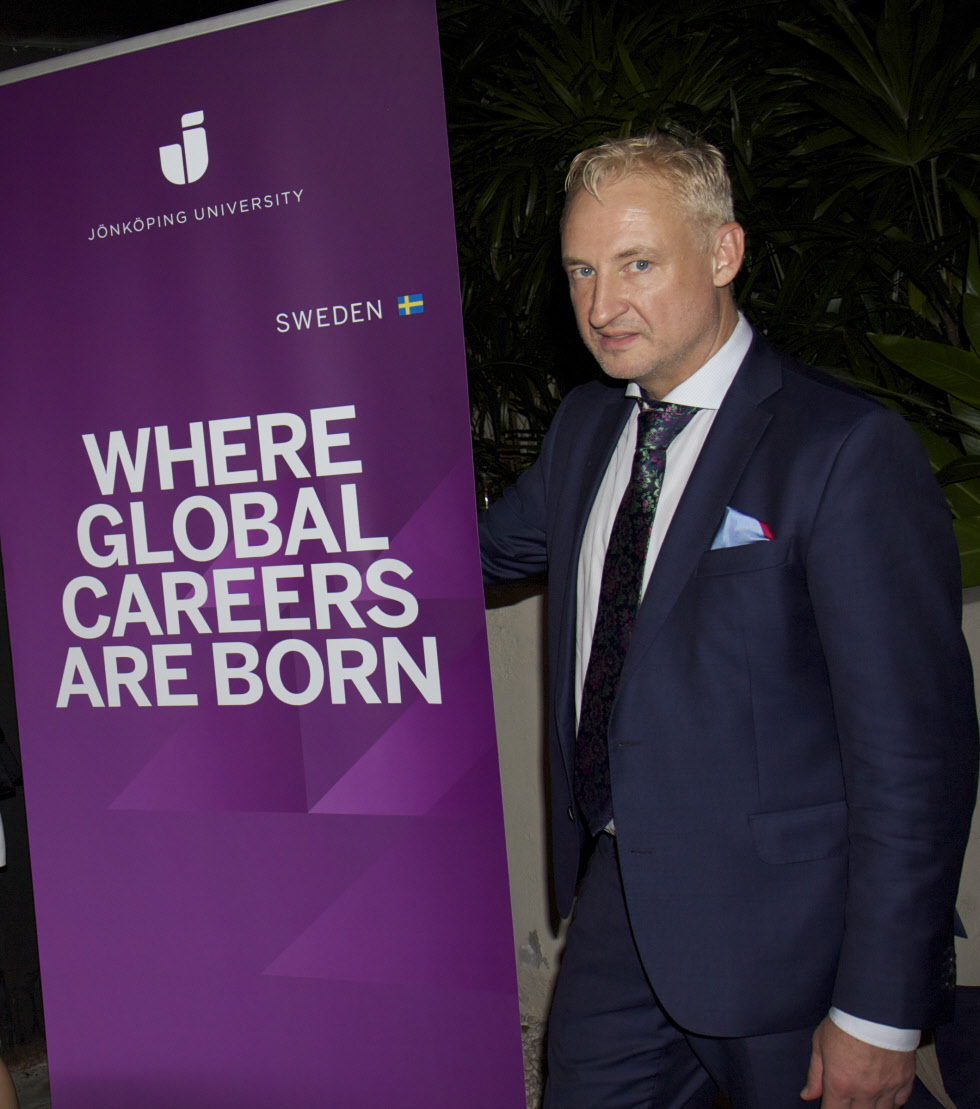
The quite remarkable fact is that JU is almost alone in offering the studies and work placement combo. “The uniqueness is that we combine studies with work experience, where the students conduct internships and graduation thesis work,” explains Associate Professor Roy Andersson, also responsible for JU’s international campuses of the School of Engineering.
Furthermore students can do their internship or thesis abroad, in collaboration with a company, and usually in combination with academic studies. Thus, they get the opportunity to try out their future profession through internships and projects.
“No other university does this in this obvious way, and we have also added it abroad and I do not know any university doing that for all Engineering students!” comments Roy.
Students (also open for the around 300 international paying ones) can spend up to a whole year of their studies abroad, including in Brazil, Singapore, Thailand, the U.S and soon also Mexico. Their Bangkok campus is welcoming nearly 40 students during 2018.
“One has the opportunity to study half a student year in Bangkok and then another six months somewhere else and get experience from two culturally diverse countries. Also if studying a Master at JU one can spend one year out of two abroad, doing an internship at one campus and at the same time one’s exam thesis at the company where one has done the internship, or choose to do that somewhere else in the world,” explains the Professor.
Through work placement (in Thailand including Aritco, Electrolux, Husqvarna and Volvo Trucks) students can bring fresh ideas to businesses (help with projects and analysis). They come to good use and can build a network of contacts in the business world.
“This also contributes to that some companies in the region become more international as their employees are forced to speak English with our students. And Swedish students are more enterprising in general than local students or those from outside Europe; they are pro-active and really want to improve something and contribute with knowledge. And that also makes it attractive for companies in this region to receive students as they usually get a mapping in a process that can become better and get a proposal how to improve,” says Roy.
Engineering students can be out at practically any company as their tools and methods they learn fit just as well in the service sector as in in production companies.
JU’s international campuses must be attractive for the companies in terms of expansion and doing business.
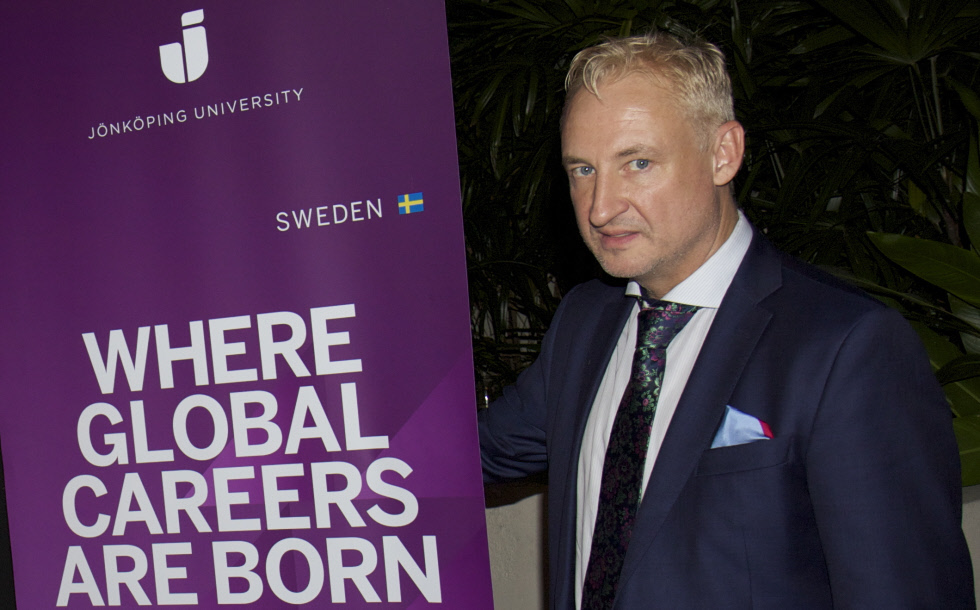
“Bangkok was chosen as a potential market for Swedish industry and with important development going forward: an expanding market all over Southeast Asia with Bangkok a hub. We even have research going on with some companies in Bangkok and we are looking at sending doctor students,” he adds.
“And our students are handed a key to these markets where they have spent a period and thus become more attractive for employers. Companies are today international and they want to recruit graduates as new recruits with some experience in internationalisation – which is what we are trying to accomplish.”
“We must prepare our students for the market we have today and also for the one in the future, what it will look like within 10 – 15 years,” adds Roy.
There should also be a possibility for JU to develop new partnerships in education and research with one or more partner universities.
JU’s partner universities can also send students to Sweden, where the School of Engineering is deepening its cooperation with the partner universities by offering more courses suitable for exchange students coming to Sweden. JU offers a study experience where businesses, entrepreneurship, innovation and flexible learning are central, plus getting cultural insights about Europe and Sweden.
Internship Bangkok 2018 examples
Heineken/ TAP Group (brewery)
Industrial engineering & Management (logistics as major) students Charlotte Klingspor and Petter Nilsson
“The aim during has been to define the connection between theory behind our course and the practical work in our internship. Our main occupation has been to analyse and come up with suggestions for enhancing the efficiency of their spare part storage but also to find areas of improvements of the whole site,” explained Charlotte.
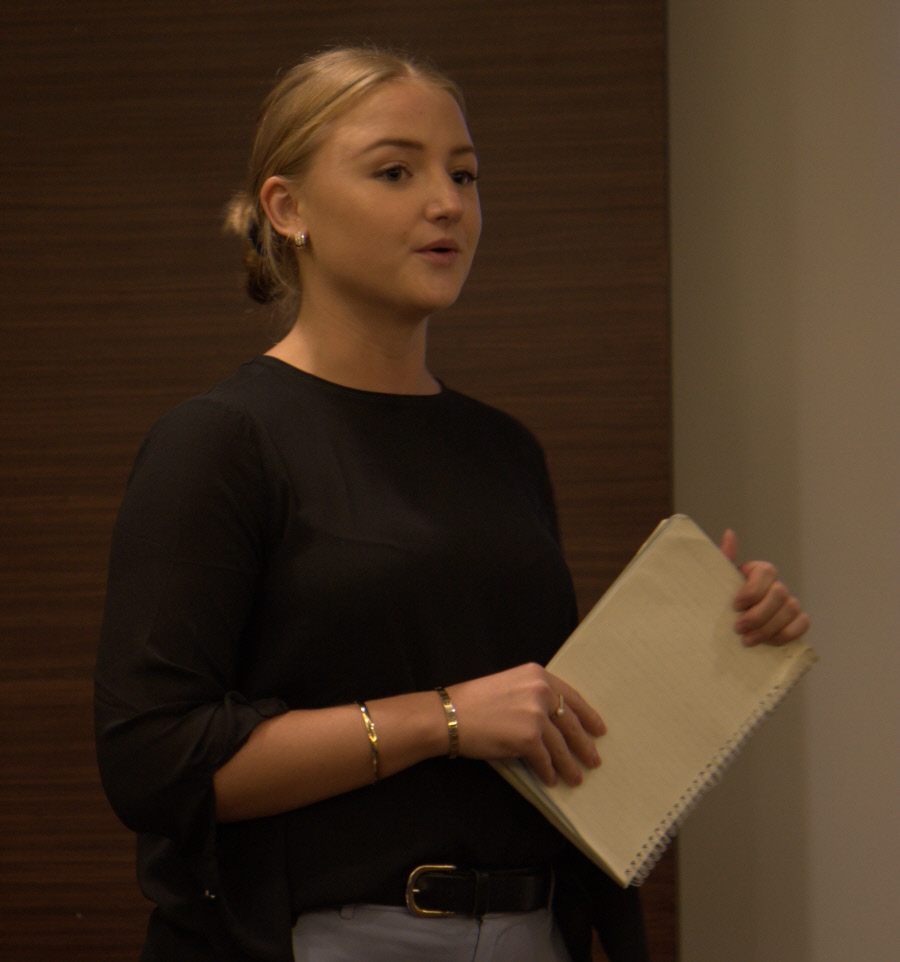
Charlotte and Peter made a big project for the planning dept. concerning forecasting regarding what to produce when in the brewery.
The spare part storage gave the students a challenge in that many spare parts had not been used at all within four years or more, prompting the question if those parts should be in storage at all.
“We have spent time listening to and analysing different departments so it has been perfect for us for learning,” thought Charlotte.
We even used some mathematical courses and we look at problems differently now prior to this, which I thought was very interesting,” Peter analysed.
Somboon Group, Somboon Advance Technology PLC. (Manufacturer and distributor of motor vehicle parts)
Industrial engineering & Management students Ellen Andersson and Immaculytt Mumbi Gathoni
Mumbi had two main projects in the engineering dept.; to optimise a production line and an automation machine project.
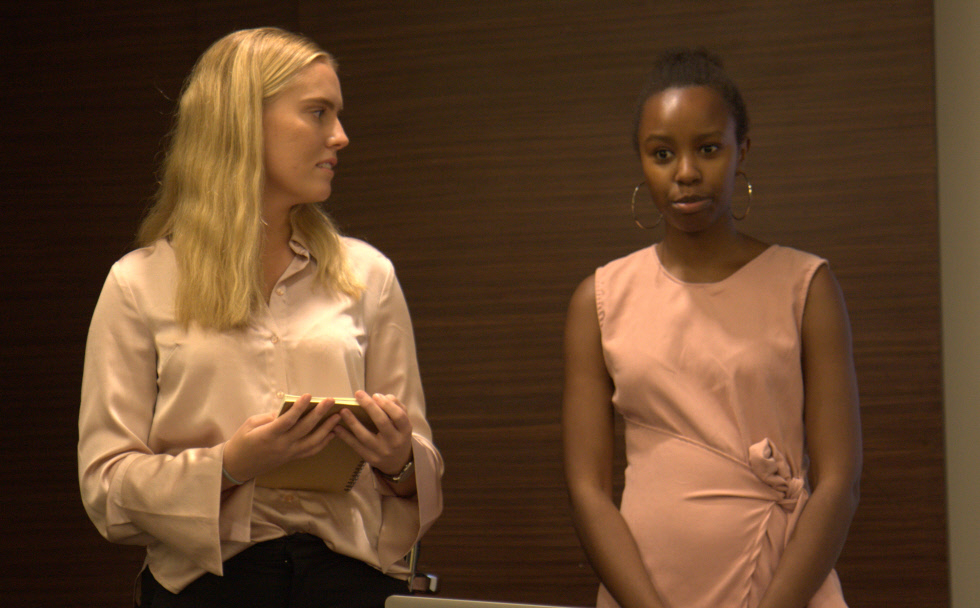
“I did motion studies where I got to have recorded videos and count the cycle time; working time and waiting time for the operators. I found two major problems; one being that one of the processes had really high cycle time, and three other stations had really long waiting time.”
Mumbi tried to find a solution and optimise this whole process and the motivation for this was to improve productivity, reduce the manufacturing cost and reduce the amount of invaluable time for the operator and the product.”
In the second project the company came up with a new concept, which was to replace the operator with a fully automated machine.
Ellen’s project’s purpose was that the employees wanted to stop using their own cars at the company compound and instead implement electric-driven transportation.
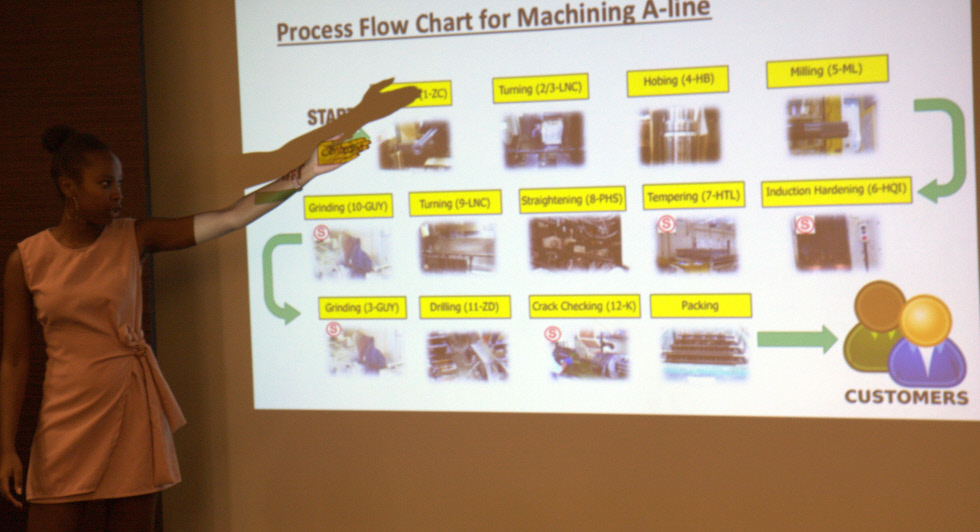
“They wanted it to be e-bikes and electric shuttle bus. I had three different goals to achieve: 1) calculate the current carbon emissions the current transportation was emitting. 2) Do a layout of where they should be located and then decides the amount of bikes at each station. 3) Optimise a time schedule for the shuttle bus.”
“During my calculations on the timetable some problems occurred. According to my calculations, based on the info and specs on the shuttle bus the company was planning on purchasing it would take 21 hours to transport all the employees one way. That was not reasonable. So I found that there were three main solutions to this problem: 1) Increasing the capacity by getting more buses or bigger buses 2) Reduce the demand on the bus 3) Reduced cycle time.”
“I did not find a solution that would both decrease the carbon emission and at the same time transport all employees within a reasonable time.”
“We learned more about working on projects and the necessary activities we have done during that. And overall we’d like to say that this was an interesting experience that gave us a lot of insights,” Mumbi summarised.
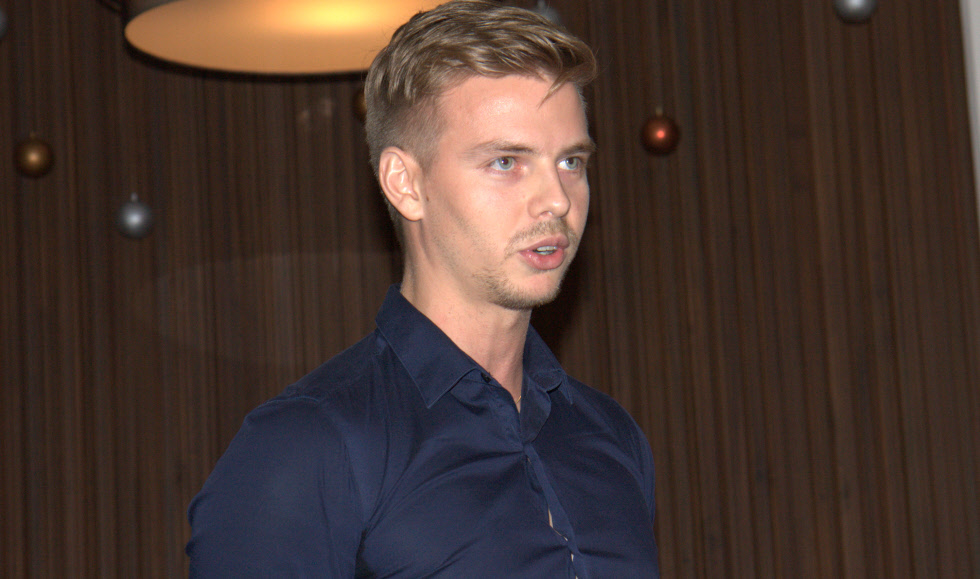
Rangsit University
Machine Engineering, Product Development and Design students Carl Westfeldt and Jens Linde
These students takes part in a project at JU that stretches over several years: the JU Solar Team, tasked to improve their solar-powered car, ‘Solveig’ for the next Bridgestone World Solar Challenge in 2019. In the competition, teams from all over the world are going to drive 3022 kilometres through Australia. The JU team comprises a diversity of skillsets and have different tasks to do, according to the supervisor and Professor in Mechanical Engineering Kent Salomonsson.
At Rangsit University the student’s area was the mechanical engineering department, which consists of 28 fully employed doctors and professors.
While brainstorming different ideas for improvement, incl. getting good input from the Aviation Maintenance Engineering Dept., the team in Sweden decided to identical chassis as in the car from 2017. Then they also decided to use solid bricks instead of ‘Open Foam’ and ‘GMSH’.
Carl explained that their aim with doing the wind tunnel experiments that they prepared was to get as little turbulence flow around the car as possible.
“However, time was limited and sadly we didn’t have the time to perform the wind tunnel experiments,” said Jens.
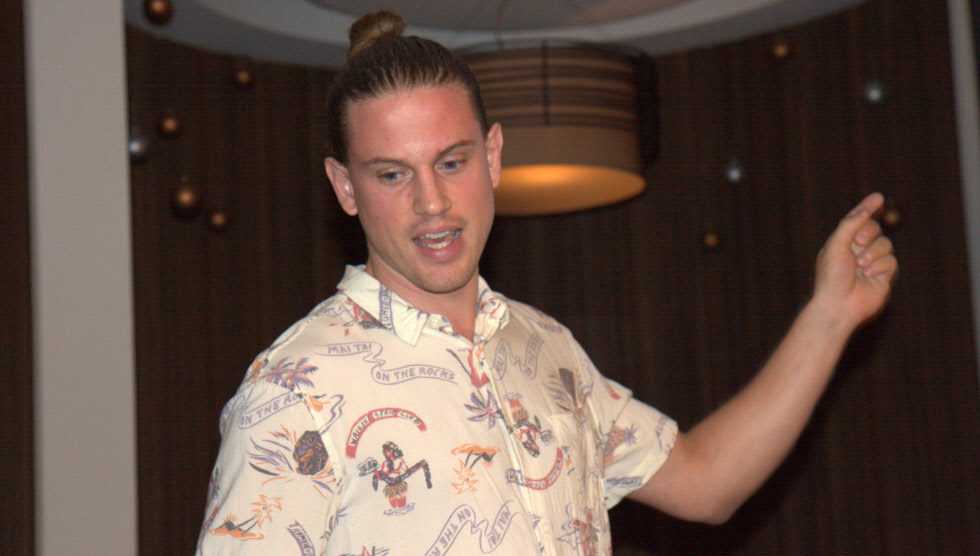
Carl summed up: We learned a lot of useful things during our internship, it has been a very good experience and the connection to our programme has been excellent. Many of the coursers we have had back home have been useful, such as: mathematical courses for calculations; computer-aided construction for working on Solidworks [3D CAD technology]; and design in introduction to product development for understanding how it is to work in a project.”
“We have done very advanced calculations, so very good experience in total,” added Jens.


